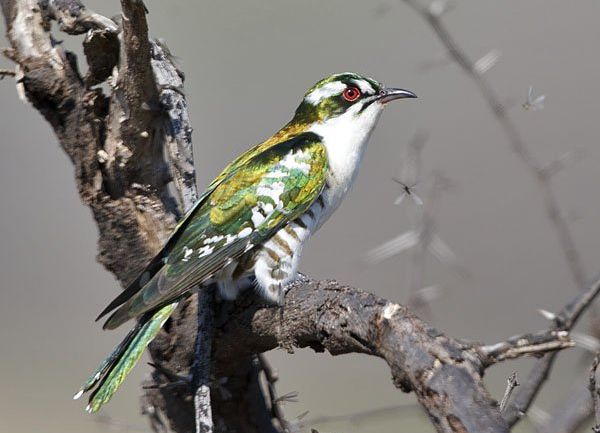
An international group of researchers obtained evidence that coevolution is associated with speciation while studying the evolution of cuckoos, the press service of the University of Cambridge reported on May 30.
Coevolution refers to the evolutionary interactions of organisms of different species that, without exchanging genetic information, are closely related to each other biologically.
According to the theory of coevolution, species that interact closely with each other cause evolutionary changes in each other, which can lead to speciation – the evolution of new species. However, there was previously little real evidence for this.
Researchers from the University of Cambridge, the Australian National University, Australia’s national science agency CSIRO and the University of Melbourne looked at the evolution of the subfamily Chrysococcyx caprius, a reproductive parasite of bronze cuckoos found in Africa, to prove this theory.
Bronze cuckoos lay one egg at a time in the nests of small songbirds. After the cuckoo chick hatches, it pushes its host’s eggs out of the nest. The owner not only loses all of his eggs, but also spends several weeks raising the cuckoo chick, wasting precious time needed to reproduce his own species.
In addition, in appearance, bronze cuckoo chicks are very similar to their owner’s chicks, which deceives the host parents, forcing them to accept the cuckoo chicks.
The study showed that when a given species of cuckoo begins to exploit several different hosts, new species appear. This happens because if the chicks of the host species have a different appearance from cuckoos, then the hosts reject the chicks of a species foreign to them.
In this case, birds with cuckoo chicks most similar to their hosts will gain an advantage and the species diverges into separate genetic lines, each mimicking the chicks of its preferred host. These new lineages are the first sign of the emergence of new species.
The results of the study were presented in the article “Coevolution with hosts underlies speciation in parasitic brood cuckoos,” published in the journal Science.
Professor Rebecca Kilner from the Department of Zoology at the University of Cambridge, co-author of the paper, said:
“This exciting new discovery could potentially apply to any pair of species that fight each other. “As we saw with the cuckoo, a co-evolutionary arms race can lead to the emergence of new species and greater biodiversity on our planet.”.
The striking differences between chicks from different bronze cuckoo lineages correspond to subtle differences in the plumage and calls of adults, which help males and females parasitizing the same host recognize and mate.
“Cuckoos are very expensive for their owners, so they have developed the ability to recognize and expel chicks from their nests.“explained Professor Naomi Langmore of the Australian National University in Canberra, lead author of the study. — “Only those cuckoos that most closely resemble their host’s chicks are likely to evade detection, so over many generations, cuckoo chicks have evolved to imitate their host’s chicks.”.
The study showed that speciation during coevolution is most intense when cuckoos are very costly to their hosts, leading to a “coevolutionary arms race” between the hosts’ defenses and the cuckoos’ counteradaptations. Speciation also occurs much more slowly in non-parasitic relatives of cuckoos.
“This discovery has important implications for evolutionary biology, as it shows that coevolution between interacting species increases biodiversity by promoting speciation.”” said lead author Dr Claire Holley from the Australian National Wildlife Collection at CSIRO, Canberra.
The researchers were able to obtain these results thanks to the team’s success in extracting DNA from eggshells in historical collections and sequencing it for genetic research. They then combined data from two decades of behavioral field research with DNA analysis of egg and bird samples preserved in museums and collections.
Source: Rossa Primavera
I am Michael Melvin, an experienced news writer with a passion for uncovering stories and bringing them to the public. I have been working in the news industry for over five years now, and my work has been published on multiple websites. As an author at 24 News Reporters, I cover world section of current events stories that are both informative and captivating to read.
